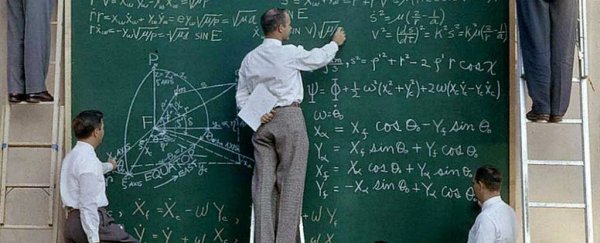Einstein is often quoted as saying, "If a cluttered desk is a sign of a cluttered mind, of what, then, is an empty desk a sign?" While this was obviously meant to be a cute little quip - probably to justify Einstein's own lack of organisation in the desk department - rather than some kind of a serious, overarching observation into the human psyche, there's truth to the idea that how we organise or workspace can say a lot about us as individuals.
Past research has found that people with messy desks are linked to higher salaries, and a 2013 study by scientists at the University of Minnesota found that those with messy desks were more prone to creative thinking and risk-taking, while those who kept cleaner and more organised desks were more likely to follow rules and schedules, and were less likely take risks. "Disorderly environments seem to inspire breaking free of tradition, which can produce fresh insights," the researchers concluded.
The case for a disorderly workspace was made by another 2013 study, in which college students were set up in a messy or a neat office and asked to 'invent' as many new uses for Ping-Pong balls as they could. As Gretchen Reynolds reports for The New York Times, the students in messy workspaces ended up proposing significantly more creative ideas than those in the neat offices, according to two independent judges.
Of course, these are generalisations that require more research to understand, and a messy desk does not a genius make. But in case you're looking for inspiration for how to organise (or not organise, as the case may be) your workspace, we've compiled a list of some of the environments that some of the world's most brilliant scientific minds chose to surround themselves in.
1. Albert Einstein's desk, taken on the day of his death in 1955
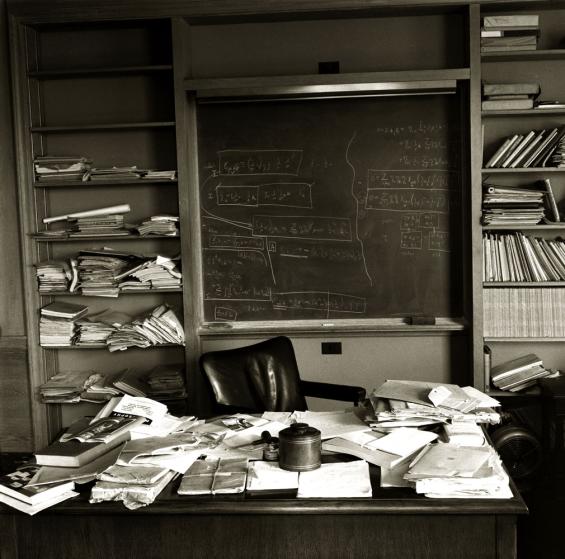 Ralph Morse/LIFE magazine
Ralph Morse/LIFE magazine
Photographed by LIFE magazine's Ralph Morse, this image of Einstein's desk, untouched and left exactly as it was on the day he died, has become iconic. Commissioned to document the events of the day that one of history's greatest minds passed, Morse recounts how he stopped on the way to Einstein's office at the Institute for Advanced Studies to buy a case of scotch.
"I knew people might be reluctant to talk, but most people are happy to accept a bottle of booze, instead of money, in exchange for their help," Morse, now 95 years old, told LIFE. "So I get to the building, find the superintendent, give him a fifth of scotch and like that, he opens up the office."
2. Nikola Tesla's super-charged 'magnifying transmitter' in 1899
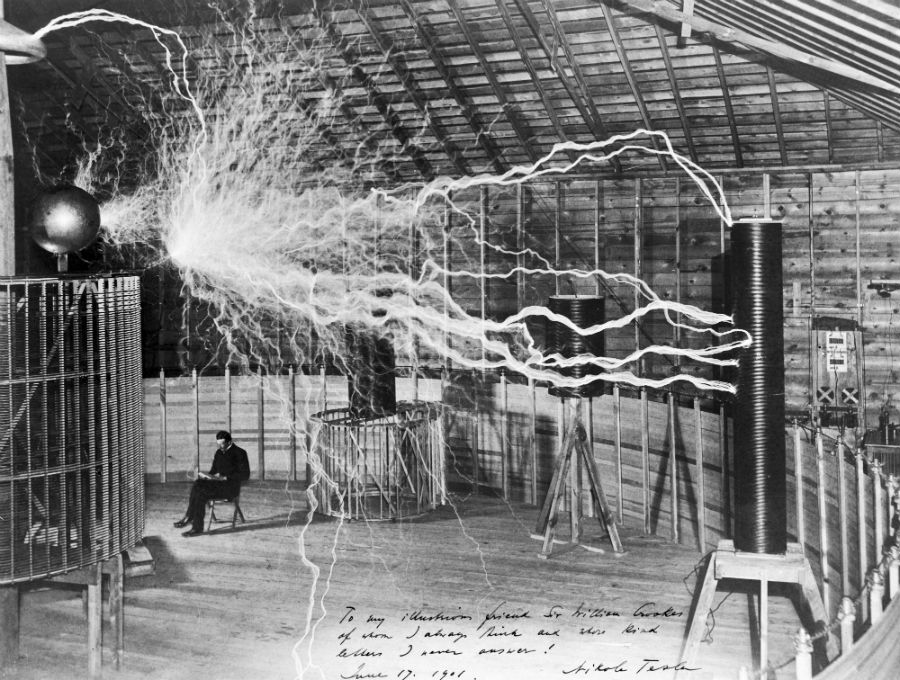 Wellcome Images, Wikimedia
Wellcome Images, Wikimedia
The famous image above was taken inside Tesla's lab in Colorado Springs in 1899, but all is not what it seems. Photographed by Dickenson V. Alley as part of a promotional stunt, the double exposure image shows Telsa looking super-chill next to his giant 'magnifying transmitter' - a high voltage generator - but Telsa knew better than to sit so close to so much energy.
To create the photo, Alley first photographed the machine's massive sparks in a darkened room, and then the photographic plate was exposed once more with the machine off and Tesla sitting in the chair. In his Colorado Springs Notes, Tesla admitted that the photo was basically 'shopped: "Of course, the discharge was not playing when the experimenter was photographed, as might be imagined!"
Well played, Telsa. Well played.
3. Jane Goodall writing up her field notes in the Gombe Stream National Park, Tanzania
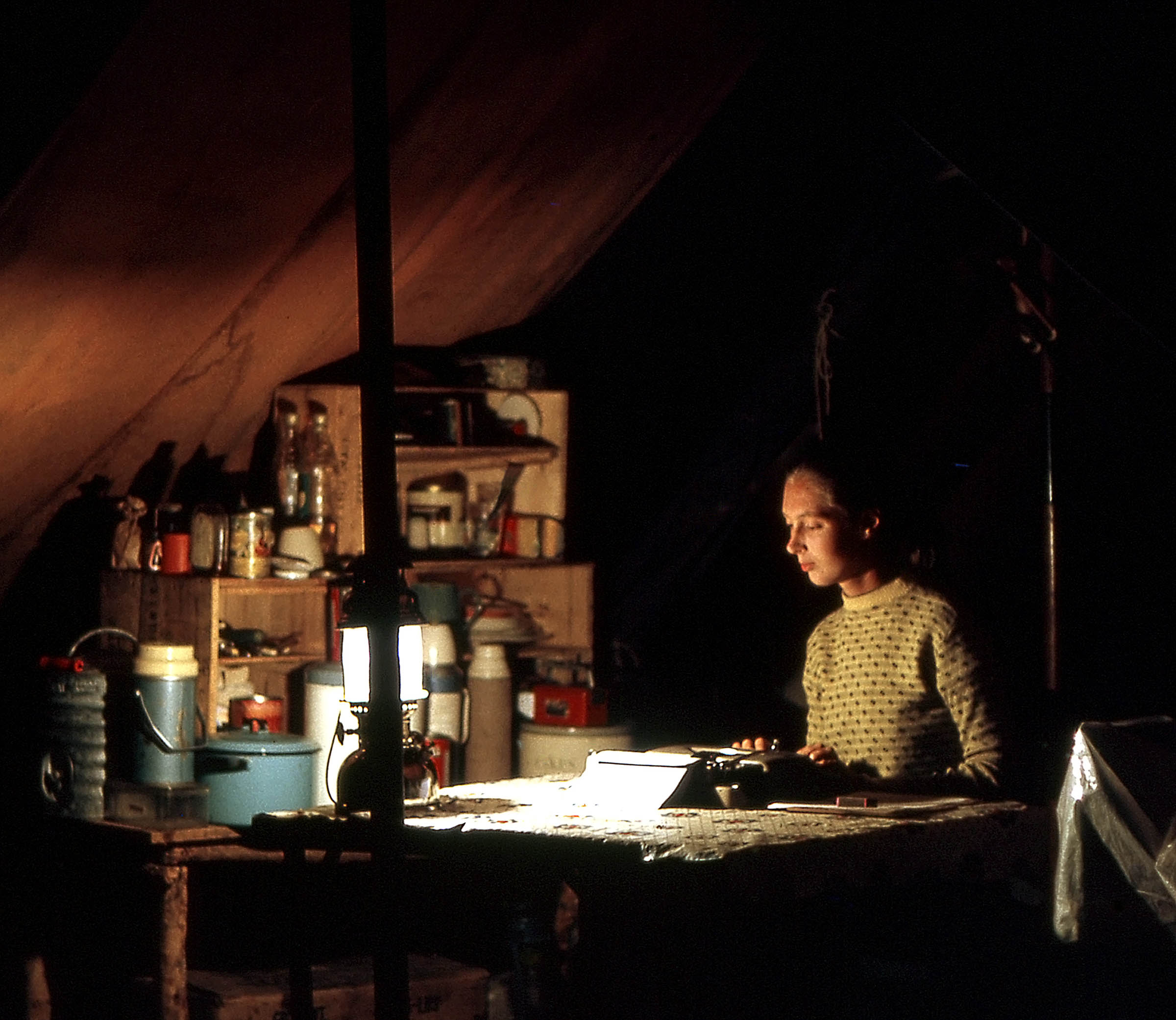 The Jane Goodall Institute
The Jane Goodall Institute
If you want to understand primates, you're not going to learn anything cooped up in a lab, as renowned primatologist Jane Goodall knows all too well. More than 50 years ago, Goodall left home a field assistant for anthropologist Louis Leakey to study chimpanzees in the wild in East Africa, and what she observed in Tanzania's Gombe Stream National Park would revolutionise our understanding of the primate mind.
But as Allison Maloney writes for The New York Times, what might sound like a dream to every budding biologist, it wasn't exactly easy:
"This story and the outcome of her work with Gombe chimps has been so glorified, it's easy to forget how young and wide-eyed she must have been, perched in the forest and enthralled by her subjects. Before the sponsorship, it was just Goodall camped out in an old ex-Army tent that let in spiders, scorpions, and snakes. She shared the space with her mother, Margaret Myfanwe Joseph, who volunteered to come along and left her other daughter, Judith, back in London."
4. NASA scientists with a board of calculations in 1961
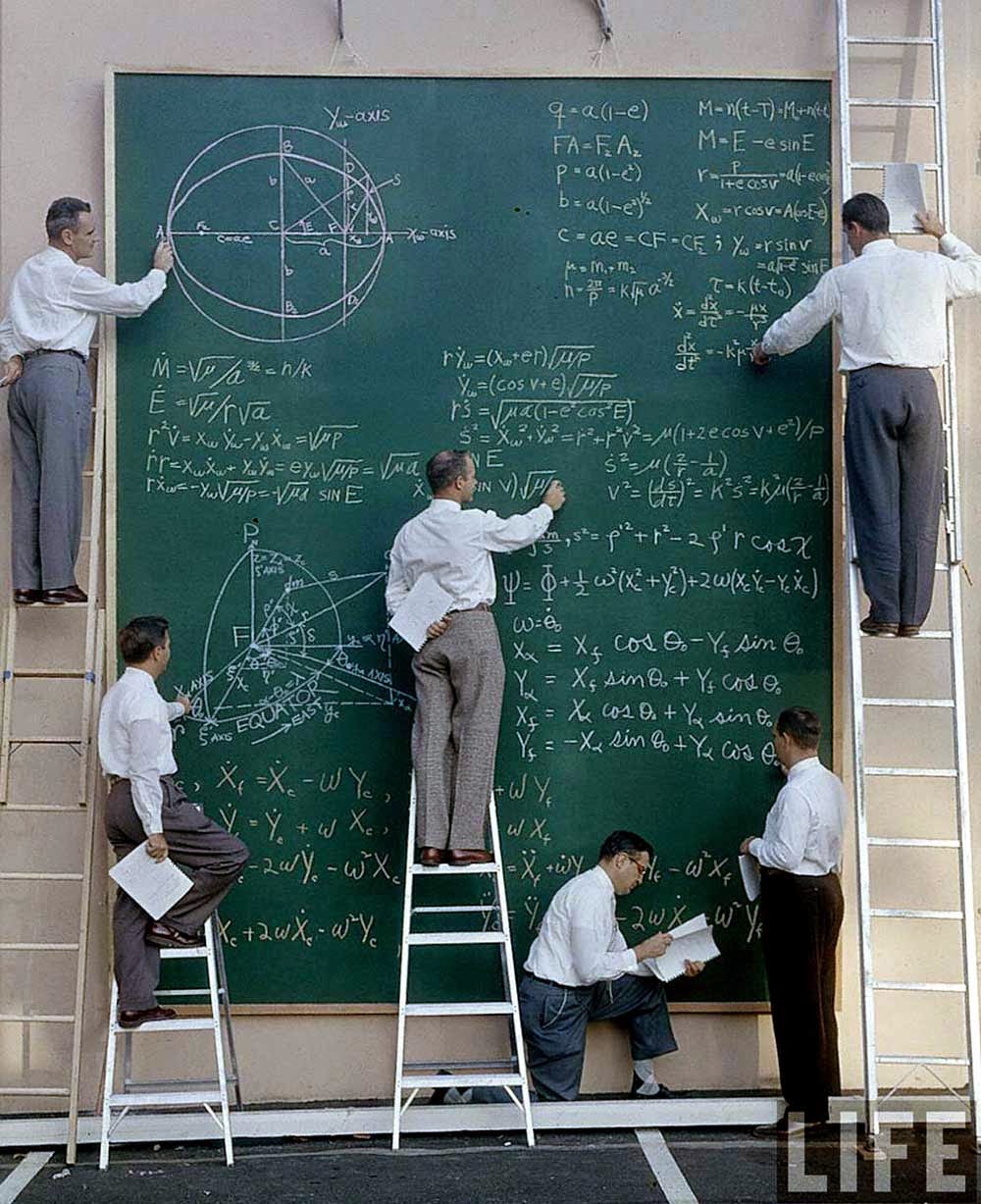 J. R. Eyerman, LIFE magazine
J. R. Eyerman, LIFE magazine
This is how scientists had to work before there were computers. Photographed by J. R. Eyerman for LIFE magazine in 1961, the scene was likely set up to look very scientific and impressive, but as the Rare Historical Photos blog points out, there are no calculations on that board, just reference equations.
"To be fair, it was the middle of the Space Race, they would not publish anything other than generic equations in LIFE magazine," the blog points out, adding that while this was certainly staged, it might have been what the scientists' work would have looked like behind closed doors, just with more constructive things written on the board:
"For a complex equation that deals with time-steps and feeds back on itself, the prominent scientists of NASA would have 'math parties'. Everyone would master one part of the equation."
5. Stephen Hawking's desk at the University of Cambridge in 2012
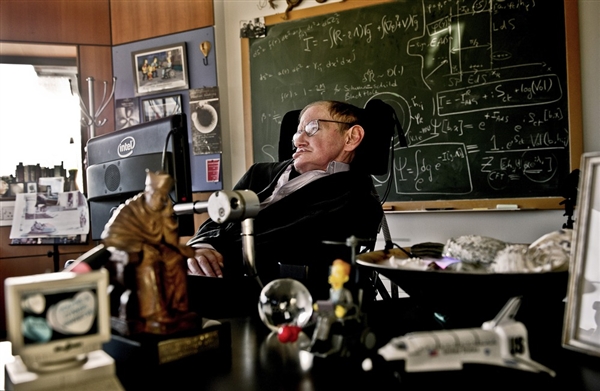 Sarah Lee/The Science Museum
Sarah Lee/The Science Museum
Commissioned as part of a series of photographic portraits commissioned by London's Science Museum to celebrate Hawking's 70th birthday on 8 January 2012, this photo shows British theoretical physicist Stephen Hawking behind his memento-laden desk. This isn't exactly how Hawking would normally arrange his things - the various oddities from his office were moved into view to give the public a sense of what makes one of our greatest living minds tick.
Among the objects you can see is a statue of the pope, which was reportedly made from around 2 kilograms of bronze, a figurine of Hawking as he appeared on The Simpsons, a space shuttle model, and a crystal globe displaying a map of the world. Another photo of Hawking from the series shows a portrait of Marilyn Monroe looming over him.
6. Former NASA astronaut Mae C. Jemison aboard the Earth-orbiting Endeavour spacecraft
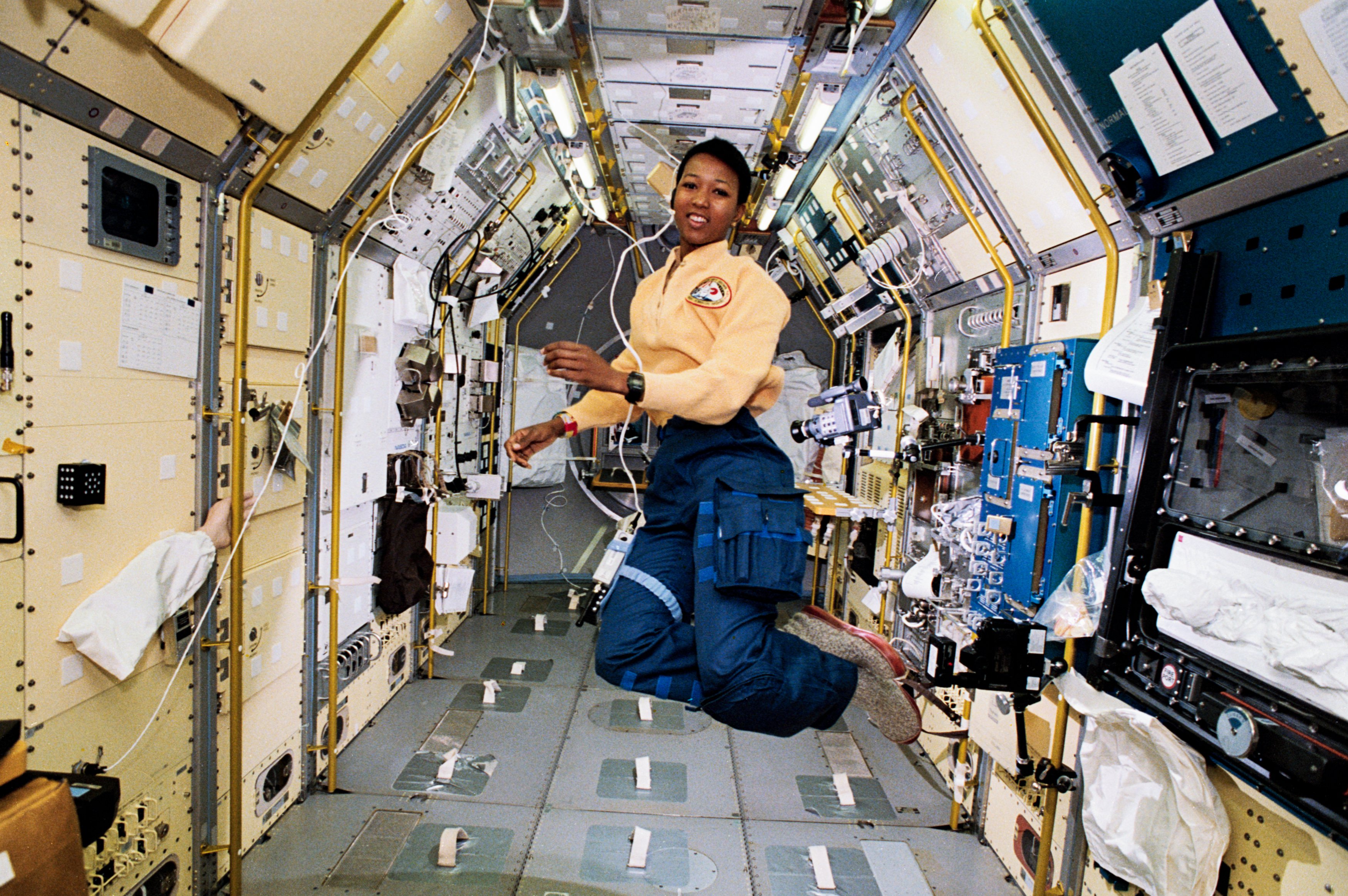 NASA
NASA
An American physician and NASA astronaut, Mae Jemison became the first African American woman to travel in space when she went into orbit aboard the space shuttle Endeavour in 1992. On what would be her only flight to space, Jemison joined five other NASA astronauts and a Japanese payload specialist for eight days of research as part of the Spacelab Japan mission. She is now the president and founder of two technology companies.
7. Buckminster Fuller with a desk full of geodesic domes
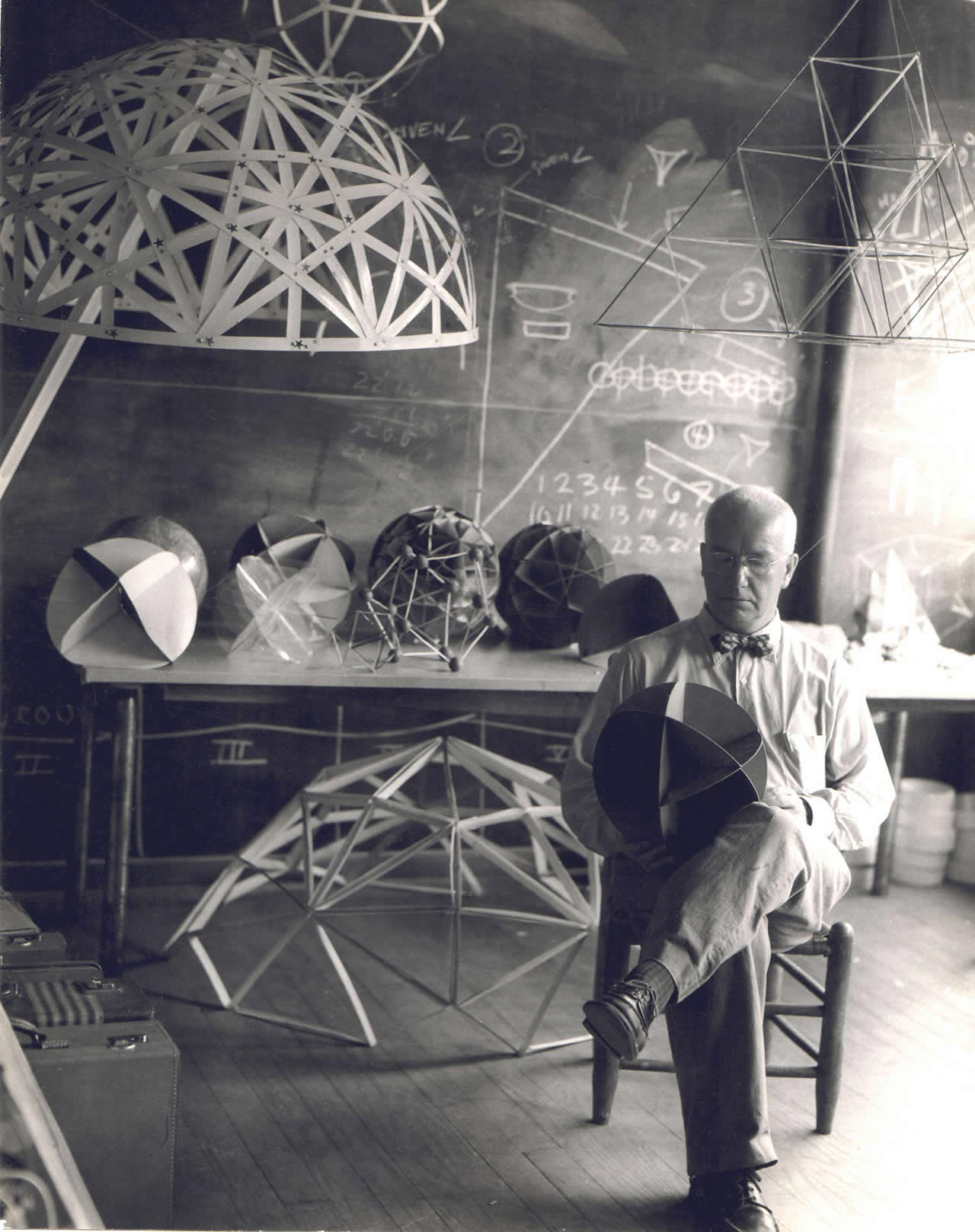 Hazel Larson Archer/Black Mountain College Museum
Hazel Larson Archer/Black Mountain College Museum
American architect, systems theorist, and inventor, Buckminster Fuller, has been immortalised in chemistry, with carbon molecules known as fullerenes named after his famous geodesic domes.
While these structures, made from a network of 'geodesics' (great circles) on the surface of a sphere or a hemisphere, were first produced by German engineer 30 years earlier, Fuller was awarded United States patents, and went on to make them famous. So why wouldn't you surround yourself in them in your lab?
8. Marie Curie in her laboratory in 1898
If ever there was a picture of the phrase "no fuss", it's this one, of Polish-born French physicist in her incredibly stark laboratory in Sorbonne, Paris, in 1898. At the time, she likely had no idea that she'd gone on to become the first woman to win a Nobel Prize, the first person and only woman to ever win twice, the only person to win twice in multiple sciences.
Described in one of her Nobel Prize biographies as "quiet, dignified, and unassuming", you can see all of that in her modest surroundings that only make her incredible achievements all the more remarkable.
9. NASA computer scientist Margaret Hamilton standing next to listings of the Apollo Guidance Computer source code, 1969
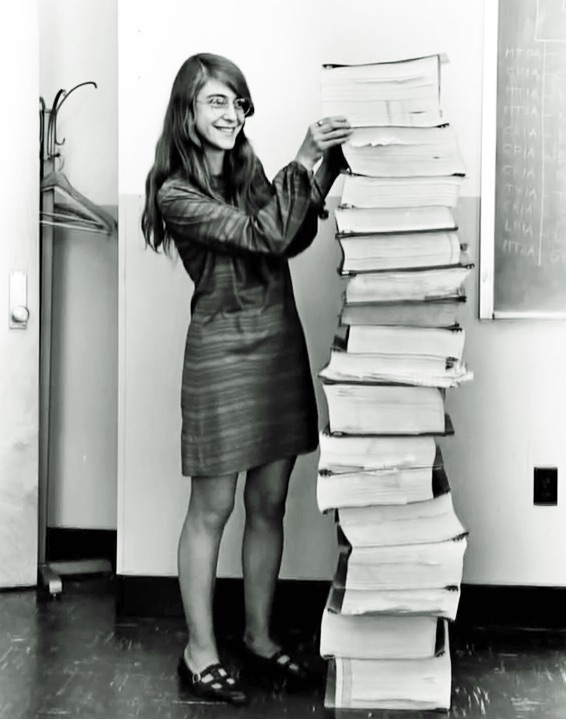 NASA
NASA
Pictured here when she was just 29 years old, Hamilton became responsible for the onboard flight software on the Apollo 11 computers. In 1969 - the year she was photographed in the above picture - the operating system she and colleague J. Halcombe Laning designed for the Apollo Guidance Computer prevented an abort of landing on the Moon.
"[T]he computer was programmed to do more than recognise error conditions," Hamilton said in 1971 interview with Datamation magazine. "A complete set of recovery programs was incorporated into the software. The software's action, in this case, was to eliminate lower priority tasks and re-establish the more important ones … If the computer hadn't recognised this problem and taken recovery action, I doubt if Apollo 11 would have been the successful Moon landing it was."
10. Thomas Edison dictating instructions to an employee on his 'telescribe' dictating machine in 1929
The original George Costanza, Thomas Edison was a renowned cat-napper, and while he looks hard at work here at his desk, he was known to catch regular Z's on various pieces of furniture in his lab… or outside it. He did have 1,093 US patents in his name, and ran 30 different companies, so if anyone's going to sleep on the lab furniture, Edison could make a pretty good case for it.
